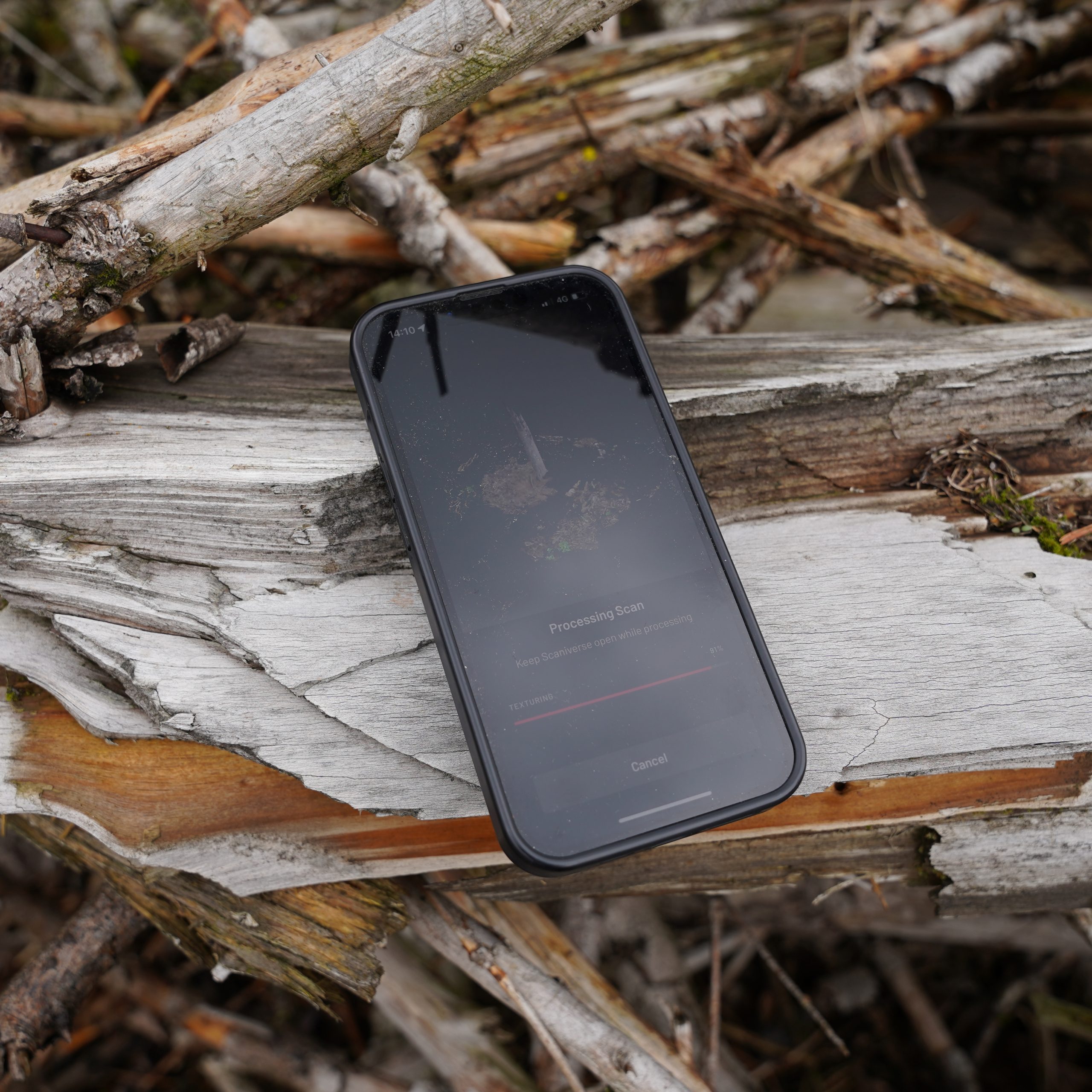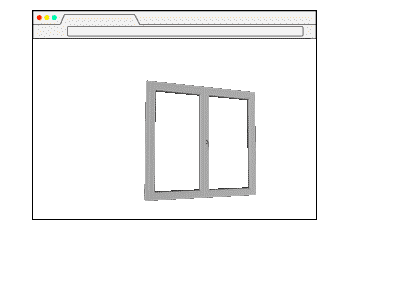
Summoning a Forest is an artistic research project at the interface of natural and technological ecologies
The research for Summoning a Forest took place between September 2019 and September 2024, beginning with the clearing of a family-owned spruce stand after a devastating European spruce bark beetle outbreak, and ending with the natural regeneration of a new, mixed forest.
During the research period I named the terrain The Plot. The Plot became a research arena for ecological anxieties, and a place where the ethereal realm of my digital art studio merged with the tangible natural world. The resulting tensions were manifested through speculative narratives, using experimental digital technologies – and myself, the artist – as mediators.
The title, Summoning a Forest, was inspired by reflections on experiments with 3D scanning of parts of the site. Displayed in augmented reality, they raise questions about sculpture, ephemerality and materiality: some aspects resemble the summoning of spirits. Meanwhile, a new forest emerged on The Plot, reassembling itself out from a seemingly barren wasteland.
The research took place in the context of an artistic phd at the Associated Faculty of the Arts of Leuven University and LUCA School of Arts in Belgium, under supervision of Dr. Wendy Morris, Dr. Laurens Dhaenens, Dr. Sepideh Karami, Dr. Jan Verpooten, and artist Theun Karelse.

About this website
This website collects the research and artistic results of Summoning a Forest. Over time, the project has expanded in many different directions and has been subject to digressions and diversions. Much of the research resulted in a variety of digital forms – some of which translates better to screen and hyperlinked formats than to paper.
The website hosts video works, 3d models, and texts providing insights in the technological-artistic processes and theoretical frameworks that support the work, including media theory, social sciences and cultural studies.



About me
I am Alexandra Crouwers (Netherlands, 1974), a project- and research-based artist working at the intersection of traditional and digital media. My practice responds to ecosystem collapse through speculative scenarios.
My work explores emotional and behavioural dimensions of the ecological and climatological crises. Drawing on archaeology, (paleo)anthropology, media theory and regional ecologies, I navigate these concerns with a blend of digital precision and wry humour, often integrating pop culture references.
While experimental short animation is at the core of my practice, I work across media including audio, text, tapestry, wallpaper, emoji proposals, 3D scans and augmented reality sculptures. I am based in Antwerp, Belgium.
Exhibitions include Museum Ludwig (Budapest), Museum M (Leuven), and Technische Sammlungen (Dresden). My films have been screened at Uppsala Short Film Festival, Transmediale (Berlin), Impakt (Utrecht), Portable Film Festival (Australia), Berwick Film & Media Arts Festival, Woodhorn Museum (Ashington), …

Digital dissemination of Summoning a Forest
The project has a prominent online presence, which is a logical match to the digital origins of my practice, but was amplified by restrictive social measures as part of the COVID pandemic, forcing more activities to take place online.
The Plot became a virtual entity, and the terrain’s transformations an exercise in digital, artistic storytelling. The links point to a selection of online research output.
The Plot, The Compositor, and Mourning Mistakes
A multimedia peer reviewed publication for VIS Nordic Journal for Artistic Research issue #6, themed ‘Contagion’. Awarded 2nd place for the SAR Award for excellent Research Catalogue Exposition, 2021.
The article covers the first two years of the research, focusing on the history and my personal connection to the land, and the process of grieving the vanished forest.
The Plot on Google Maps
The terrain is situated in the South of the Netherlands, adjacent to a Natura 2000 protected park, Strabrechtse Heide.
It is marked as an ‘arts organisation’ to connect it to the artistic project.
Blockchain
Between 2021 and 2024, fragments of the research were made into nfts (non-fungible tokens) on the Tezos blockchain – an energy-efficient alternative to more well-known blockchains.
3d scans, virtual twins of real world sculptures, and short animations helped to distribute the narrative of The Plot across a new digital ‘space’.
Questions
What is artistic research?
For me, artistic research has several meanings. It helps to frame the less visible part of my artistic practice. As a metaphor, it might help to think of artworks as mushrooms growing on the surface of the ground, and research as the mycelial networks that feed them.
Additionally, I consider artistic research as an art-science interaction. It involves locating and evaluating scientific knowledge from disciplines that inform the art practice: how does this knowledge confirm or contradict the artistic output?
In my case, scientific knowledge forms the departure points for artistic fabulation. The result is a close relationship of my work with the genre that is commonly known as ‘science fiction’.
What is an artistic phd?
An artistic phd is a way to validate artistic research in an academic context. In general, it means that an artist is expected to present its practice in a way that fits academic criteria.
The process considers artistic research as a way to produce knowledge as a result of research questions, methodologies, and argumentation.
What is your research question?
There are either none or a constellation of them. The tension between subjective and often intuitive artistic processes and the phd format remains somewhat unresolved. Questions that are addressed in Summoning a Forest may be:
- Can digital artistic practices help bridge perceived gaps between natural and technological worlds?
- What does it mean to make digital art in an age of ecological breakdown?
- What are the spruce bark beetle’s messages?
- ‘Doing nothing’ as an effective ecological, activist and artistic method: yay or nay?
Can we visit the terrain?
Sure! You are welcome to visit the regenerating forest as long as you do not cross the wood walls that surround the terrain. The best view is from the information panel in the North-East corner of the land.
Don’t forget to scan the QR codes on the panel, and do have a coffee at the nearby forest café.
What happens to The Plot now that the project has ended?
The terrain is my mother’s. Throughout the research period, it became clear to her and me that interference with the land would work against its immense regenerative power. The terrain is left largely to decide its own future. We visit it regularly to see how it is evolving, and occasionally check for invasive species (they are removed).
A few weeks per year, some of my mother’s bee hives are relocated to the terrain to grow into new populations. We may create some paths in the future, to make sure we can get around a little bit. In a few years, we may have to remove some growth to prevent parts of the terrain from becoming too dense. This will provide more space and sunlight for other trees and plants.
My grandfather bought the terrain in 1964 to compensate for the loss of farmland to forced land consolidations. In accordance with my grandfather’s wishes, the terrain will never be sold and will remain in our family.